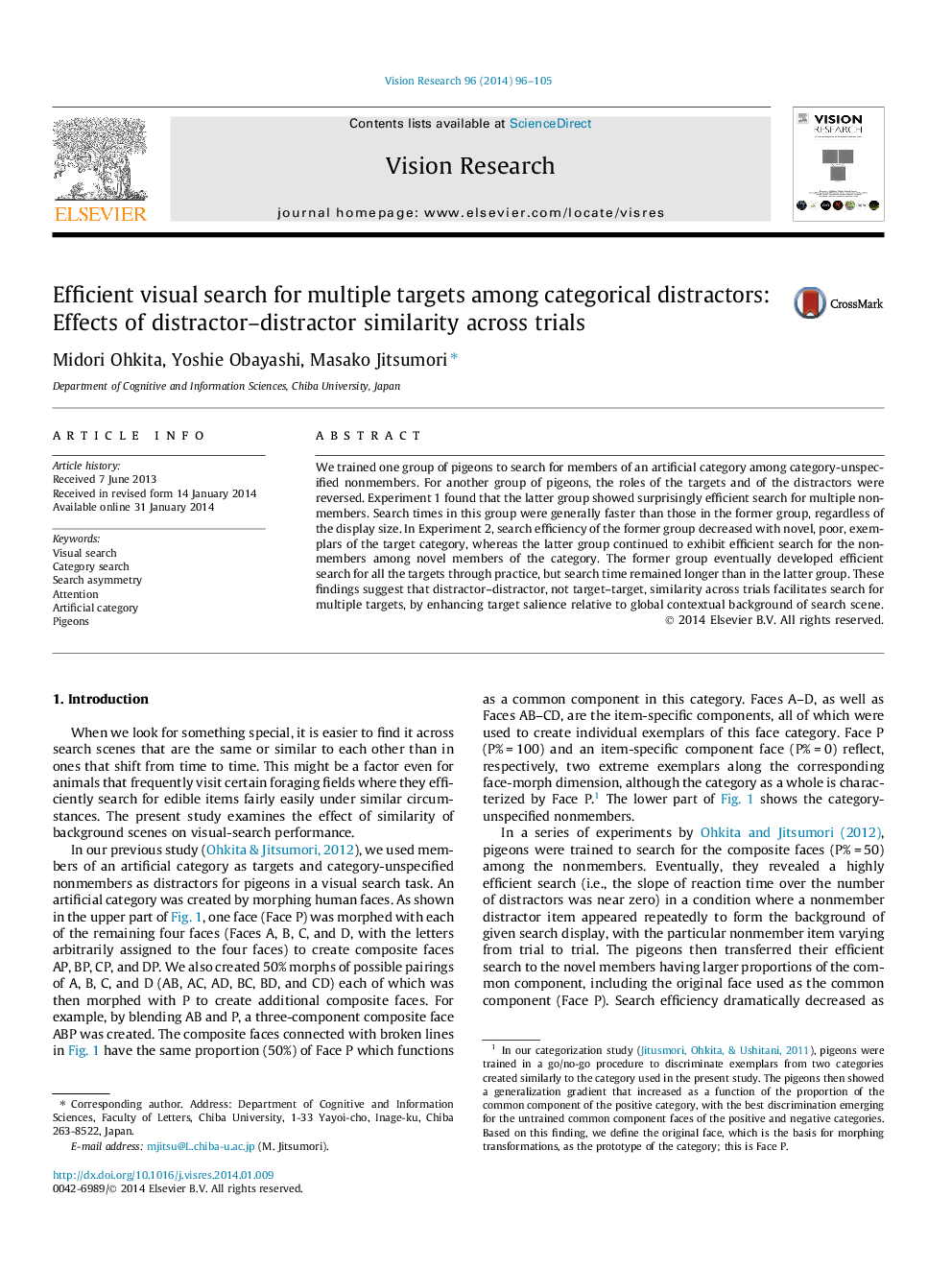| Article ID | Journal | Published Year | Pages | File Type |
|---|---|---|---|---|
| 6203473 | Vision Research | 2014 | 10 Pages |
â¢We used members of an artificial category and nonmembers as stimuli in search tasks.â¢One group of pigeons searched for category members among nonmembers.â¢For another group of pigeons, the target-distractor roles were reversed.â¢Searches for nonmembers among members were efficient and faster than the reverse.â¢Across-trial similarity of distractors facilitated search for the nonmembers.
We trained one group of pigeons to search for members of an artificial category among category-unspecified nonmembers. For another group of pigeons, the roles of the targets and of the distractors were reversed. Experiment 1 found that the latter group showed surprisingly efficient search for multiple nonmembers. Search times in this group were generally faster than those in the former group, regardless of the display size. In Experiment 2, search efficiency of the former group decreased with novel, poor, exemplars of the target category, whereas the latter group continued to exhibit efficient search for the nonmembers among novel members of the category. The former group eventually developed efficient search for all the targets through practice, but search time remained longer than in the latter group. These findings suggest that distractor-distractor, not target-target, similarity across trials facilitates search for multiple targets, by enhancing target salience relative to global contextual background of search scene.
